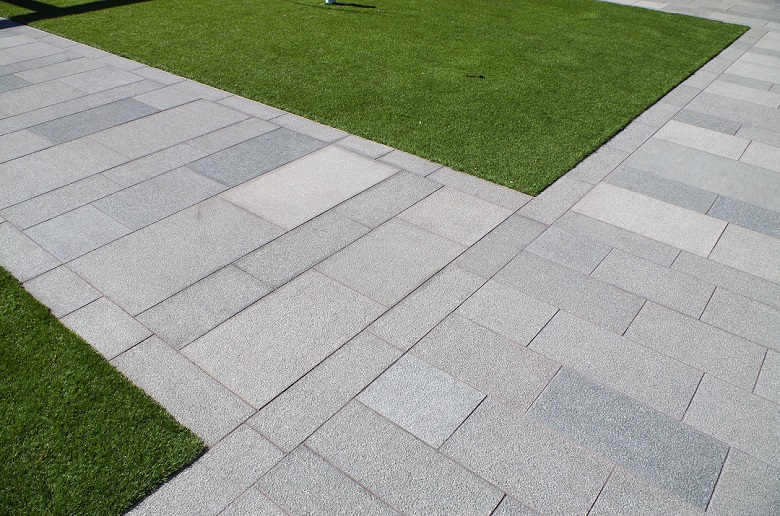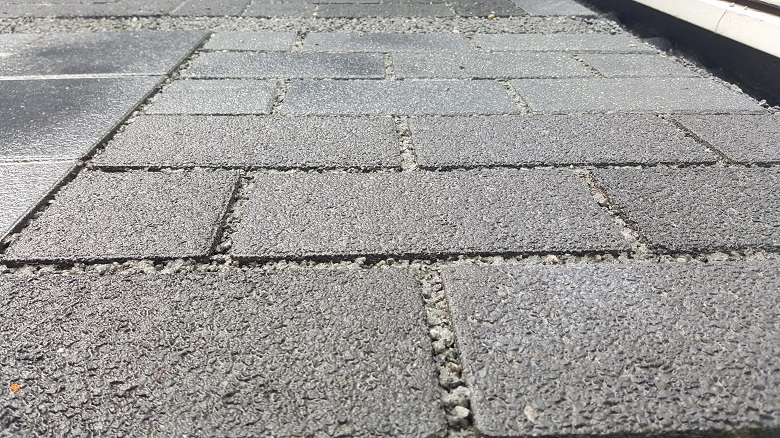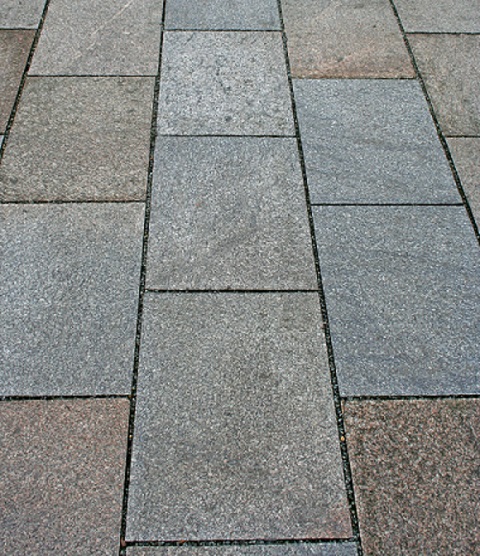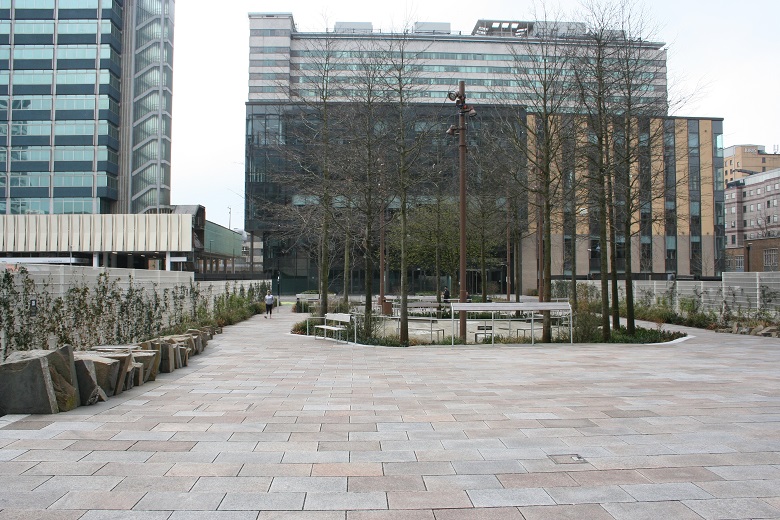Bound and Unbound Paving Construction: Using British Natural Stone Materials by Giles Heap

Post date: 27 Nov, 2018
There are two basic types of construction for paving:
- Bound (rigid construction, generally utilising concrete & cement mortars)
Within each of those two basic principles, there are then two choices:
- Unbound (flexible construction, usually without concrete & cement mortars)
- Non-Permeable (water is designed to flow into drains and not “through” the system)
- Permeable (designed to allow the vertical and horizontal movement of water within the system)
It is possible to have a bound paving system that is highly permeable, just as it is also possible to have an unbound (flexible) system that is impermeable, yet we still tend to associate permeability with unbound and bound with impermeable and this need not be the case. A brief description of the four options follows:
Bound (Non-permeable)
Traditionally, paving would be laid on a sub-base of either concrete, or Type 1, the exact specification dictated by the levels of traffic expected. With the advent of better engineered proprietary mortars and BS7533, specifications using thinner stone units, with longer expected life-spans, in heavier traffic, is now achievable. Many good examples of this method of paving exist, and almost any paving scheme with British Yorkstone is likely to be laid in this way. However, an example of a bound construction with a new and very striking British paving product, would be the Green Schist, currently being laid at the AELTC, Wimbledon.
 Green Schist at Wimbledon
Green Schist at Wimbledon
Bound (Permeable):
With certain, permeable bedding and jointing mortars, it is now possible to design a bound scheme with high levels of permeability. Previously, if a rigid paving was required and high levels of permeability as well, we were pretty much restricted to certain types of block paving. Not always the most aesthetic look, and not always the longest lasting of surfaces. However, with bound and permeable natural stone surfaces now being utilised, designers can achieve the best of both aesthetics, and longevity. Essentially, a bound-permeable system is built around the use of high strength, permeable mortar bedding products, along with a permeable jointing. If laid on a concrete base (for higher traffic loadings and areas with poor structural sub-soils, like clay), then the concrete base needs to allow the water to drain away, either to drainage in the concrete, alongside it, or through drainage holes drilled through the concrete base. If laid on a Type 1, then the water will slowly seep down through the subbase, as long as the subbase is also permeable. This method of construction is relatively new, and there are only a few examples as yet, however a visit to Tottenham Football Stadium would be a good place to start. This permeable system covers around 50% of the site and is laid on Steintec’s “tuffBed” bedding mortar, with their “tuffFlow” jointing mortar (see image). No, this doesn’t give the most aesthetic joints ever seen, but if you want a very permeable paving system, that can withstand heavy traffic conditions, then this is the solution to consider.
 Steintec TuffFlow jointing mortar at Tottenham Football Stadium
Steintec TuffFlow jointing mortar at Tottenham Football Stadium
Unbound (permeable):
Ruskin Square in Croydon is a very good example of an unbound, permeable public space. To achieve the levels or permeability required, sawn sided Grampian Granite (from Scotland) was laid on a specially graded, clean granite bedding aggregate, with structural spacers laid between the flags. These structural spacers do two things. First, they provide set joint widths, but more importantly they mitigate the lateral movement of the sawn paving on the bedding aggregate. These joints (nominally 8mm wide) are then filled with a free draining jointing aggregate.
 Grampian Granite at Ruskin Square, Croydon
Grampian Granite at Ruskin Square, Croydon
The finished scheme allows huge amounts of water to drain through the paving (reducing localised flooding issues etc), but it also allows the paving to dry faster, reducing the amount of commonly found staining on the surface. Issues such as picture framing, efflorescence and frost heave will not affect this scheme. On the down side, the maintenance regime needs to be considered carefully, as a vacuum street cleaning machine will very quickly suck up all the aggregate in the joints, so cleaning and maintenance teams need to be aware of the requirements to ensure a good, long lasting paving.
 Ruskin Square, Croydon
Ruskin Square, Croydon
Unbound (non-permeable):
A very good example of an unbound scheme that has stood the test of time, would be in Fort William. This was laid around 15 years ago, and still looks amazing today. The images showing the scheme were only taken in October of this year, and as can be seen in the images, it still looks good. There is no reason why this shouldn’t work, as long as the correct materials and dimensions are used. After all, we laid granite and Yorkstone streets in paving and cobbles for hundreds of years without cement bedding and jointing mortars, so I’m sure that we can do it now!
.JPG) Yellow and Silver Grey Granite Cropped Setts, Fort William
Yellow and Silver Grey Granite Cropped Setts, Fort William
The UK is accepted as having some of the best designers in the world, but with an ever-growing population putting ever greater pressure on our finite water supply, it becomes more and more important that we design more environmentally aware paving schemes, using sustainably sourced materials. So, what could be better than naturally permeable yet high quality and long-lasting paving schemes, using home-grown natural stone, of which there are many to choose from?
Having them designed by some of the best Landscape and Urban designers in the world, maybe?